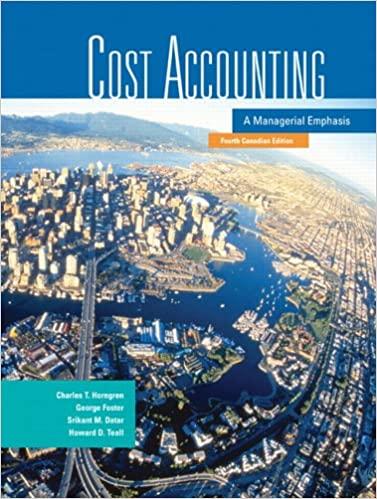Interpretation ofstatements (continuation of 2-30). Refer to the preceding problem. Required 1. How would the answer to
Question:
Interpretation ofstatements (continuation of 2-30). Refer to the preceding problem.
Required 1. How would the answer to the preceding problem be modified ifyou were asked for a sched¬
ule of cost of goods manufactured and sold instead of a schedule of cost of goods manufac¬
tured? Be specific.
2. Would the sales manager’s salary (included in marketing, distribution, and customer service costs) be accounted for differently if the Howell Corporation were a merchandising company instead of a manufacturing company? Using the flow of costs outlined in Exhibit 2-10
(p. 49), describe how the wages of an assembler in the plant would be AN injroduction TO COST accounted for in this manufacturing company.
3. Plant supervisory salaries are usually regarded as indirect manufacturing costs. Under what conditions might some of these costs be regarded as direct manufacturing costs?
Give an example.
4. Suppose that both the direct materials used and the plant amortization were related to the manufacture of 1 million units of product. What is the unit cost for the direct materials assigned to those units? What is the unit cost for plant building and equipment amortiza¬
tion? Assume that yearly plant amortization is computed on a straight-line basis.
5. Assume that the implied cost behaviour patterns in requirement 4 persist—that is, direct materials costs behave as a variable cost and amortization behaves as a fixed cost. Repeat the computations in requirement 4, assuming that the costs are being predicted for the manufacture of 1.2 million units of product. How would the total costs be affected?
6. As a management accountant, explain concisely to the president why the unit costs differed in requirements 4 and 5.
Step by Step Answer:

Cost Accounting A Managerial Emphasis
ISBN: 9780131971905
4th Canadian Edition
Authors: Charles T. Horngren, George Foster, Srikant M. Datar, Howard D. Teall





